2 Person REI Tent: How To Choose In 2023
Half Dome vs Trailmade vs Trail Hut vs Flash vs Flash Air
For 2023, there are five unique options when choosing a Co-op-Brand 2 person REI Tent for backpacking and camping, and this guide is written to help you know how to decide which to buy. Whether you’re a dedicated backpacker looking for a blend of performance and value, need something small and compact for travel, or just want the option to backpack from time to time, REI has you covered. When comparing Half Dome vs Trailmade vs Trail Hut vs Flash vs Flash Air, know that they can all be used for backpacking or camping, but some are much better than others at one of those activities.
This guide is grounded in decades of backpacking and outdoor industry experience, as well as decades of keeping tabs on REI’s excellent line of value-optimized tents. In general, we view backpacking and car camping as two ends of a gradient spectrum. Car camping-friendly tents should prioritize spaciousness and features at the expense of extra weight, whereas backpacking-friendly tents should prioritize low weight at the expensive of spaciousness and features.
We hope this guide helps you choose your next 2 person REI tent. But while you’re here, don’t miss our holistic guide to the Best Backpacking Tents or the Best Crossover Tents. These guides are brand agnostic, not strictly limited to REI Co-op models. You make Adventure Alan & Co possible. When purchasing through links on our site, we may earn an affiliate commission at no additional cost to you. Here’s why you can trust us.
Half Dome vs Trailmade vs Trail Hut vs Flash vs Flash Air
In summary, the Half Dome SL 2+ is the most versatile jack of all trades in the REI Tent family. Flash and Flash Air are dedicated backpacking tents. And Trailmade and Trail Hut are value-oriented crossover designs, equally at home backcountry or car camping.
- Half Dome: Most spacious. Most versatile. Mid-weight. Mid-price. Best for car camping. 3rd best for backpacking.
- Trailmade: Most affordable. 3rd most spacious. 3rd best for car camping. 4th best for backpacking.
- Trail Hut: Second most affordable. Second most spacious. 2nd best for car camping. Worst for backpacking.
- Flash: Second lightest weight. Second best for backpacking. 4th best for car camping. Tied for most expensive.
- Flash Air: Lightest weight. Best for backpacking. Not freestanding. Worst for car camping. Tied for most expensive.
If You’re Not Sure, Just Choose Half Dome SL2+
The REI Half Dome SL 2+ Tent is far and away the most versatile Co-op brand tent for the most people, and one of the most versatile on the entire market. It is nearly a 2.5 person in size, which makes it very comfortable in all aspects, length, width, and height. And while it’s on the heavier end of the backpacking tent spectrum, it’s still not that much heavier than the average backpacking tent. It’s simple and easy to set up, even for beginners. And it has lots of internal storage pockets, vents, and full size vestibules.
Who Should Choose Half Dome SL2+
- People who intend to use their tent for both car camping and backpacking
- People with larger bodies
- Campers who use wide sleeping pads
- Campers who play games in the tent
- Shoppers looking for the best value, not the lowest price
- Backpackers who spend lots of time in the tent
- Beginner and intermediate backpackers
- First-time backpacking tent buyers who want something extremely reliable and versatile
- Shoppers who find Half Dome on sale, sometimes 50% off, so why not
REI Trailmade vs Trail Hut Tents
When deciding between REI Trailmade vs Trail Hut tents, know that the differences are very minimal and you will likely be happy either way. Both are very affordable, best-in-class entry-level backpacking-camping crossover tents, and both can be used for either activity.
Favors Trailmade over Trail Hut
- $20 less expensive.
- 10 ounces lighter weight
- More ventilation thanks to shorter interior sidewalls
- Slightly better for backpacking
Favors Trail Hut over Trailmade
- Ceiling spreader bar for increased headroom
- More privacy when used without rain fly, thanks taller opaque interior sidewalls
- Rainfly material is slightly more durable
- Slightly better for camping
Verdict
Trailmade is the better backpacking tent because it is more than half a pound lighter weight. Trail hut is the better car camping tent because it has more headroom and privacy. When choosing between them, consider which activity you will do more of and let that be the tiebreaker on which to choose.
What About Half Dome vs Trailmade or Half Dome vs Trail Hut?
When comparing Half Dome SL 2+ to Trailmade 2 and Trail Hut 2, the answer is that there really is no comparison. Half Dome is strictly better in virtually every single performance metric and measurement. However, Half Dome is significantly more expensive than either, so of course you’re getting a better product. When deciding between Half Dome vs Trail Hut and Half Dome vs Trailmade, it really comes down to your budget. If you can afford to buy a better tent, you should definitely choose Half Dome because it is larger and lighter weight. If you’re on a budget, Trailmade and Trail Hut will still get the job done nicely.
REI Flash vs Flash Air Tents
When deciding between REI Flash vs REI Flash Air Tents, know that there are substantial design differences and significant trade offs, but the end result in both cases yields a better-than-average-performance lightweight backpacking tent for a fair price.
Quick Answer
- Flash is freestanding, lightweight, beginner friendly, and better for mixed backpacking with occasional car camping use.
- Flash Air is non-freestanding, even lighter weight, has larger vestibules, is best for backpacking, and is not designed for car camping.
Favors Flash over Flash Air
- Freestanding
- Can be pitched without fly
- Faster/easier setup/fewer guy lines
- Familiar pole structure is beginner friendly
- More versatile, viable for car camping and travel
Favors Flash Air over Flash
- Seven ounces lighter weight (~18%)
- Significantly larger vestibules (~50%)
- Taller ceiling
- Sturdier in wind
- Easier entry/exit
Extended Verdict
In our opinion, the Flash Air is the superior backpacking tent in large part due to the 18% weight savings and 50% larger vestibules. However, this comes at the cost of it being a trekking pole supported, non-freestanding design. That means pitching the Flash Air requires you to use trekking poles as support beams and to properly tension out all the guy lines, less the entire structure collapses in a gust of wind. To the experienced backpacker, this is trivially easy, but it does have a learning curve that new backpackers might find daunting. The author strongly prefers trekking pole structures like Flash Air to traditional pole tents for 80% of backpacking.
Conversely, the Flash Tent is a traditional lightweight tent pole design that you already know and love. Without any instruction, you will find it easy and intuitive to setup. While it is still a great backpacking tent, it is also an acceptable – if not slightly small – car camping tent. It is also great to pack for travel and can be set up anywhere. To the car camper, vestibule size matter very little and the weight savings of the Flash Air matters even less. What’s more, when car camping, you don’t want a trekking pole structure because you don’t want guy lines going out every which way that can create tripping hazards, especially to impaired fireside whiskey drinkers.
Thus, we encourage you to choose between REI Flash Air vs Flash Tents based on your comfort level with the idea of a non-freestanding tent and whether or not you will use it for any car camping or travel. If you want the best possible backcountry performance and have a knack for pitching tents, choose the Flash Air. If you want the simpler freestanding design because you are new to backpacking, or you’re not obsessive about proper tent pitching, or you plan to occasionally use this tent for car camping or travel, choose the Flash.
What about Flash Vs Half Dome
If you decide on Flash 2 over Flash Air 2, consider once more if Half Dome would be the better choice. It is much more spacious and better for mixed car camping use. If you plan to use it for car camping any more than 25% of the time, Half Dome is a superior choice to Flash. While it is a pound heavier, it is much more spacious and $60 cheaper.
What About 1P, 3P, and 4P REI Tents?
Each of the the five REI backpacking tents, Trailmade Trail Hut, Half Dome, Flash, and Flash Air comes in a 2P size, and one additional size. Combined, you have an array of options to choose from.
- 1P Options: Trailmade 1, Flash Air 1
- 3P Options: Flash 3, Half Dome SL 3+
- 4P Options: Trail Hut 4
When to choose a 1 Person REI Tent
Solo backpacking tents are a great opportunity to save packed weight and bulk when going out alone. They are a great add-on to your quiver, but we don’t recommend purchasing a 1P tent until you already have a good 2P. Unless you go solo on more than 25% of your trips, you can get by using a 2P tent for one camper, and saving the money.
That’s because while 2P tents offer nearly 70-100% more space, they usually only weigh 20-50% more. For example, the Trailmade 2 weighs 68 oz, only 12 oz (21%) more than the 56 oz Trailmade 1. But if you do frequently fly solo, it truly is worth the weight and bulk savings, and we encourage to pick up a 1P tent like Trailmade 1 or Flash Air 1.
When to Choose a 3 Person REI Tent
A 3P tent is incredibly versatile and an excellent add-on to your quiver. Of course it allows three people to sleep in one tent, perfect for social trips when three people split between two tents is undesirable so there’s no odd man out, and everyone can feel included and bond together in one space. But also, just like how a 2P tent is only marginally heavier than a 1P, a 3P is only marginally heavier than a 2P. For example, the Flash 3 weighs 56 oz, only 11 oz (24%) more than the Flash 2 at 45 oz.
Splitting the additional empty 3rd body’s width between two people can massively increase livability for two campers. The author prefers camping two people in a 3P tent for trips involving lots of tent time when the room to spread out will boost morale or allow for gaming. If you are likely to camp with two other friends or just want a favorable livability-to-weight boost, consider picking up a 3P tent.
When to Choose a 4 Person REI Tent
4P tents can be difficult to find tent pads for, and are a rather narrow use-case. That’s because four campers usually already have access to two 2P tents between all of their gear. And two 2P tents is a much more comfortable way to sleep four campers, and especially two couples. Between them, there’s only half as much vestibule space and half as many doors per person, and twice as many smells and elbows flying around. It’s just more cramped.
However, there are some groups who will want a 4P tent nonetheless. For the most part, that’s families. Good for two parents and two kids, or two parents, one kid, and one dog. Kids having smaller bodies is especially great because it reduces the sense of crowding with four people maxing out a 4P tent. Another good use case for 4P tents is use for 3P in extended rain, or the prospect of significant bad-weather-induced-tent time. If your group like to play games in the tent, the extra space is super valuable to lay out cards, for example.
2 Person REI Tent Reviews
REI Half Dome SL 2+ Tent
The REI Co-op Half Dome SL 2+ Tent (shop now) is perhaps the best-selling backpacking tent of all time thanks to it’s incredible versatility, performance, and hyper-spacious interior, all relative to a very modest price. Half Dome’s value is simply best-in-class. And no matter where and how you choose to camp in the front or backcountry, this tent will keep you comfortably protected.
- Price: $349
- Weight: 3 lbs, 15 oz
- Material: Sil-Nylon, 40D floor, 30D fly
- Area: 33.8 ft² | Vestibule: 22.5 ft² | Interior Area/Pound: 8.6 ft²
- Length: 90″ Width: 54″ Height: 42″
- Pros: Affordable. Versatile. Freestanding. Very spacious. Good headroom. Easy setup. Fully-featured. Comes with footprint & stakes. Vents.
- Cons: Heavy-ish
Construction & Features
Half Dome’s sheer size calls out the loudest. With 33.8 ft² of interior floor plan, it is the largest of any 2 person backpacking tent we’ve reviewed, more than wide enough for two wide sleeping pads and 7.5 feet long to boot. Add onto that a whopping 22.5′ of vestibule space (also above average) and a 42″ ceiling height plus spreader bar. This is truly a tent you can comfortably hang out in that feels big inside.
The x-bar pole structure is storm-worthy and classic for a reason, it just works. What’s more, these poles are pre-bent to create even more verticality on the side walls, adding to the perception of livability. It is also extremely user-friendly, beginner-friendly, and easy to set up.
Half Dome has a solid set of features including an array of internal mesh pockets and hang loops which create excellent internal storage. We love the rainfly vents, and also rolling up both sides of the vestibule for maximum airflow on warm days. And it even comes with its own stakes and footprint to protect against abrasive surfaces. Plus REI’s generous warranty!
Okay, it’s not all gravy. At 3.9 lbs minimum trail weight, it is the heaviest backpacking tent in our buyer’s guide, and the heaviest tent we would considering packing for typical 3-season backpacking. But we have very high standards in that regard. In actuality, 3.9 lbs is fairly average when you take a zoomed out view of the entire backpacking tent marketplace.
Verdict
If you want a quiver-of-one tent that is spacious and comfy for car camping while also being compact and mid-weight for backpacking, then Half Dome is the perfect crossover tent for you. And at $349, you won’t have to break the bank on it either. This tent has so much to offer in terms of value, versatility, and livability that there’s no doubt as to why it’s such a best seller.
REI Trailmade 2 Tent
The REI Co-op Trailmade 2 with footprint is about as much backpacking tent as you could possibly hope to get from a reputable outdoor brand for under $200. REI has really upped their backpacking collection lately, and they’ve been especially dominate in the budget backpacking tent department thanks to the Trailmade Collection. Shop now.
- Price: $179
- Weight: 4 lbs, 4 oz
- Material: Coated Polyester floor and fly.
- Interior: 31.7 ft² | Vestibule: 19.1 ft² | Interior Area/Pound: 7.5 ft²
- Length: 88″ Width: 52″ Height: 40″
- Pros: Very affordable. Spacious floor plan. Freestanding. Vents. Complimentary footprint & stakes. Internal pockets.
- Cons: Heavy. No spreader bar.
Construction & Features
There is literally nothing fancy about the Trailmade 2. Structurally speaking, it’s built with a cross pole aluminum frame, no spreader bar, and with unspecified coated polyester fabric.
Perhaps where this backpacking tent shines the brightest is it’s spaciousness relative to cost. At nearly 32 sq ft of interior space, it’s the second largest in our guide and well above average. The 52″ width in particular is exceptional, with more than enough for room for two wide sleeping pads.
Trailmade is not exactly feature-rich. There are some interior pockets, and like many small 2 person tents in this class, it comes with a footprint and stakes. But beyond that, there just isn’t much else to write about. But within the sub-$200 tent category, having two doors and two vestibules is in and of itself a feature, perhaps the best of all.
We nod to Trailmade as the pinnacle of entry level tent design. It is versatile and comfortable enough for car camping, and just lightweight enough for backpacking.
Verdict
The combination of its larger-than-average interior with a significantly-less-expensive-than-average price tag makes the Trailmade 2 a killer value, and an excellent entry-level backpacking tent.
REI Trail Hut 2 Tent
The REI Co-op Trail Hut 2 builds off of REI’s baseline tent model, the Trailmade, and soups it up with a set of livability features that make it more livable at the expense of being slightly heavier and costlier. All said and done, it’s still a great entry level tent.
- Price: $199
- Weight: 4 lbs 14 oz
- Material: Coated nylon tafetta fly, coated polyester floor
- Area: 31.7 ft² | Vestibule: 19 ft² | Area/Pound: 10.3 ft²
- Length: 88″ Width: 52″ Height: 40″
- Pros: Affordable. Wide. Freestanding. Simple. Spreader bar. Vents. Complimentary footprint.
- Cons: Quite heavy.
Features
While nothing about the REI Co-op Trail Hut 2 is innovative, it gets the job done at a good price, is beginner friendly, and we trust it way more than some random cheapo from a less reputable brand.
The classic cross-pole design is tried and true, and it’s more spacious than average. Like the Trailmade, it is 52″ wide, whereas a traditional 2P backpacking tent is closer to 45″. The ceiling at 40″ is fairly standard, but the spreader bar adds height to the sides that the Trailmade lacks.
Features inlcude top vents, interior pockets, and a complimentary footprint. The footprint will extend the life of the floor by preventing micro abrasions, but isn’t necessary when camping on soft ground, dirt, or grass.
Compared to the Trailmade, it is $20 more expensive, 10 oz heavier, but comes with the aformentioned spreader bar, uses nylon tafetta for the rainfly instead of polyester, and has taller interior side walls to block wind and add privacy.
Verdict
At 4.9 lbs, it’s nearly 4X heavier than our preferred ultralight tents, which is the primary downside to all of the incredible cost savings and spaciousness. Nonetheless, the Trail Hut will reliably get you sleeping outside in the backcountry, and your purchase is protected by REI’s excellent warranty. We’re glad they offer this tent and hope it helps lower the barrier of entry to backpacking.
REI Flash 2 Tent
The REI Co-op Flash 2 Tent is a lightweight, top-performing, freestanding two-person backpacking tent at a fair price point. It is the sibling to the Flash Air 2 Tent, but different in that it is set up with dedicate tent poles instead of trekking poles and notable for the scooped rain fly and high bathtub floor and sidewalls. But perhaps best of all, it weighs less than 3lbs, thus competes with some of the other top freestanding backpacking tents costing $100 more. Learn more in our full-length REI Flash 2 Tent Review.
- Price: $399
- Weight: 2 lbs, 13.2 oz
- Material: 20D Recycled ripstop silnylon
- Area: 28.7 ft² | Vestibule: 13.8 ft² | Area/Pound: 18.7 ft²
- Length: 88″ Width: 52″/42″ | Peak Height: 40″
- Pros: Lightweight. Freestanding. Good value. Sustainable design. Vents. Wide and tall at headend. Convex head end.
- Cons: Somewhat narrow/low ceiling at foot end. Foot and head ends are mostly single walled, potential condensation issues.
Features
The most interesting and notable feature on the REI Co-op Flash Air 2 Tent is the scooped rain fly in conjunction with extra tall bathtub floor walls at head and foot end. This design choice takes a swing to save a bit of weight on rain fly materials and increase ventilation by encouraging more air through. It achieves this, but that but comes with some downsides too.
First and foremost, the scoops on the head and foot end of the rain fly improve ventilation as there is less double-covered area where bathtub sidewalls overlap with fly. It’s about 6-8″ of overlap. However, this is a double edged sword because on windy days, it allows more wind in, increasing susceptibility for the pitch to become loosened, warped, or damaged by a severe gust at the head end, where the overhang is capable of catching wind. While the poles do feel sturdy enough, we don’t recommend pitching the head end onto the windward side!
The bathtub floor, while regular height on the sides, is extra high at the foot and head end, and surrounds the backpacker with waterproof materials at both ends. The head end and foot ends are more like a single walled tent than a double walled design, which increases the likelihood of brushing against wet sil-poly material. Needless to say, despite the scooped rainfly, we feel safe and protected from rain penetrating in all but the most extreme winds where gusts could torsional warp the structure to expose gaps.
REI Flash 2 has an interesting pole structure. One main ridgeline pole runs the length of the ceiling before forking at the foot end. An arched cross section sits at the head end and provides a literally vertical wall. And it’s top off with a spreader bar over the center of the ceiling for extra headroom on the sides of the ceiling. While the 40″ peak height is quite average, this tent does make good use of all 40″ for most of the tent body; it feels bigger inside than it actually is. We also love the head-end vents which are large and in charge.
At 13 sq ft, the vestibule is definitely on the smaller side, but there is still more than enough room to store a backpack and pair of shoes. The fly and floor are made with 100% recycled nylon. Mother earth thanks you.
Verdict
The REI Co-op Flash 2 Tent makes some interesting design choices with the scooped fly for weight savings and increased ventilation plus extra tall bathtub head and foot ends to compensate. We aren’t totally convinced on it, but it’s not a huge flaw and the overall performance of this tent is good relative to the sub 3-pound weight. The design on the whole ultimately yields a solid lightweight backpacking tent for a fair price that’s competitive with top of the line lightweight models from Big Agnes and NEMO. If you want the lightest freestanding Co-op brand backpacking tent, we recommend the Flash 2 as a slappin’ good value.
REI Flash Air 2 Tent
Updated for 2023, the 2-person, lightweight, non-freestanding trekking pole setup Flash Air 2 Tent builds off the success of the Co-op first ultralight tent design that we loved for its great value proposition. It’s now heavier and more expensive, but still their best dedicated backpacking tent design.
- Price: $399
- Weight: 2 lbs 6.5 oz
- Material: 100% recycled Silnylon
- Area: 28.7 ft² | Vestibule: 21.2 ft² | Area/Pound: 18.7 ft²
- Length: 88″ Width: 52″/42″ Peak Height: 47″
- Pros: Lightweight. Good value. Vent. Foot end strut. Large vestibule. Sustainable. Good headroom. Wide headend
- Cons: Not freestanding. Not quite ultralight. Single wall. Narrow foot end.
Features
For starters, this is an asymmetrical, non freestanding, single-walled trekking pole shelter designed specifically for backpacking. It comes with its own lightweight poles (2.2 oz each) that can be used to set up in lieu of trekking poles. But you should plan to use trekking poles nine times out of 10.
One feature we’ve seeing more and more lately, and that is included on the Flash Air (2023 edition), are the end struts. This is a small pole that adds structural height at the ends which prevents the fly material from sagging and/or blowing onto your head or the end of your sleeping bag and brushing you with wet condensation runoff.
We love how large the vestibules are on this tent, with over 11 sq ft per vestibule, there is more than enough room to store backpacks, shoes and still enter and exist without feeling cramped. The 52″ wide head end is very very spacious, especially considering the asymmetrical design with means the high point of the ceiling is also over the head end. This allows to comfortably sit upright and move around. This is very friendly to tall hikers, however, the foot end is a narrow 42″ and the tent on the whole is actually a bit shorter than average at 88″ long, so the Co-op givith, the Co-op taketh away.
One potential feature add on would be a reinforced tie-out point at the center of the foot-end side wall to prevent the ceiling from sagging. But that’s a relatively minor nitpick.
Verdict
This is the lightest weight 2P backpacking tent made by the Co-op, and a great value proposition for those looking to carry less weight. However, it exists in the shadow of its predecessor and tradeoffs therein; compared to the 2020 version, this Flash Air is heavier and more expensive. But it is also larger, more livable, and more sustainable. All-in-all, it’s still our top pick for REI’s best dedicated backpacking tent.
2 Person REI Tent Conclusion
We hope that by now, you understand how to choose your next 2 person REI tent. When comparing REI Half Dome vs Trailmade vs Trail Hut vs Flash vs Flash Air, know that, in the end, they’re all good options but with different strengths and weaknesses. We feel that Half Dome is probably the right choice for 50% of shoppers, the 25% most interested in saving money should decide between Trailmade vs Trail Hut, and the dedicated backpackers should be choosing between Flash vs Flash Air. If you have questions or want help choosing based on your specific needs, please drop us a line in the comments. Happy hiking!

 How to Cut Liners Out of Running Shorts & Why You Should
How to Cut Liners Out of Running Shorts & Why You Should



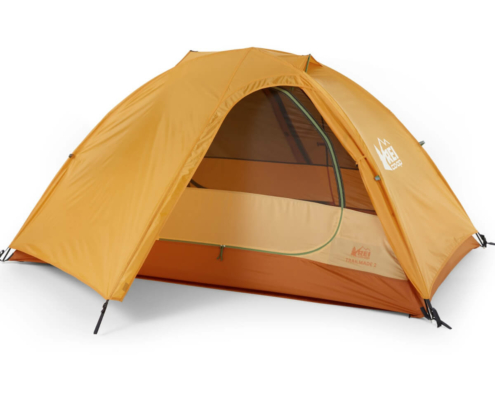
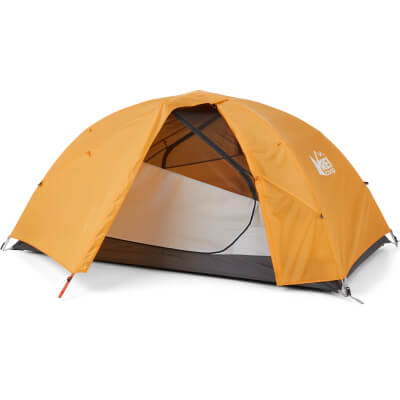
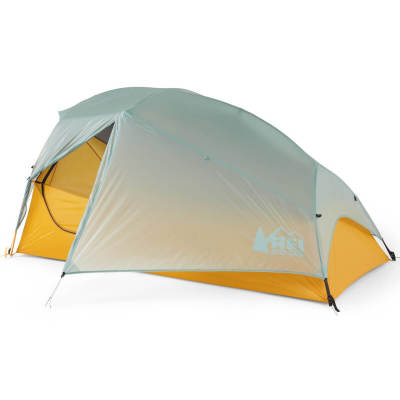
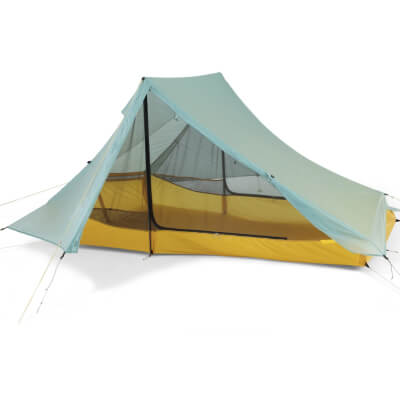
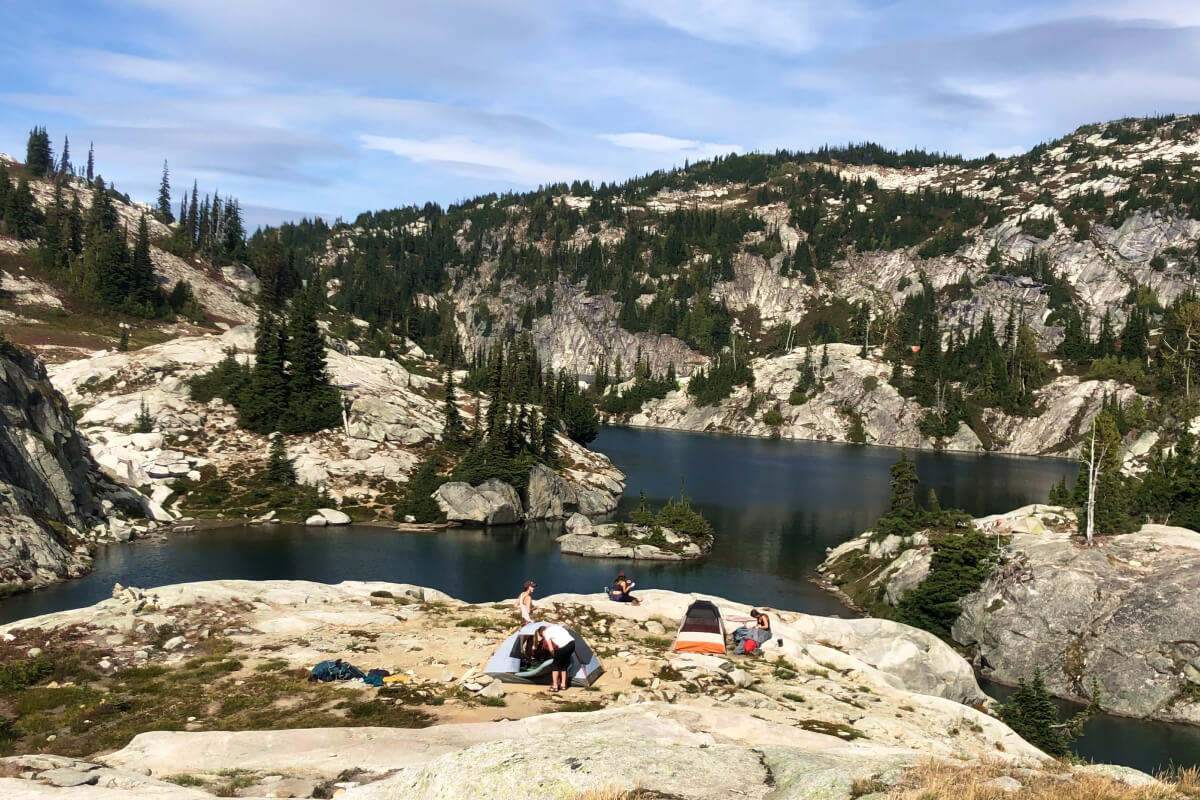

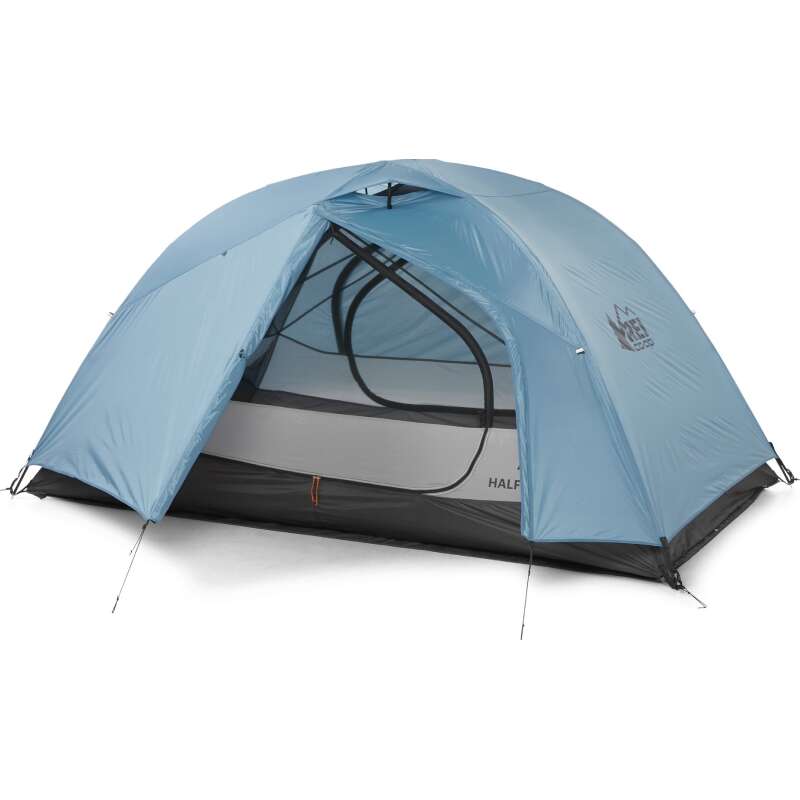
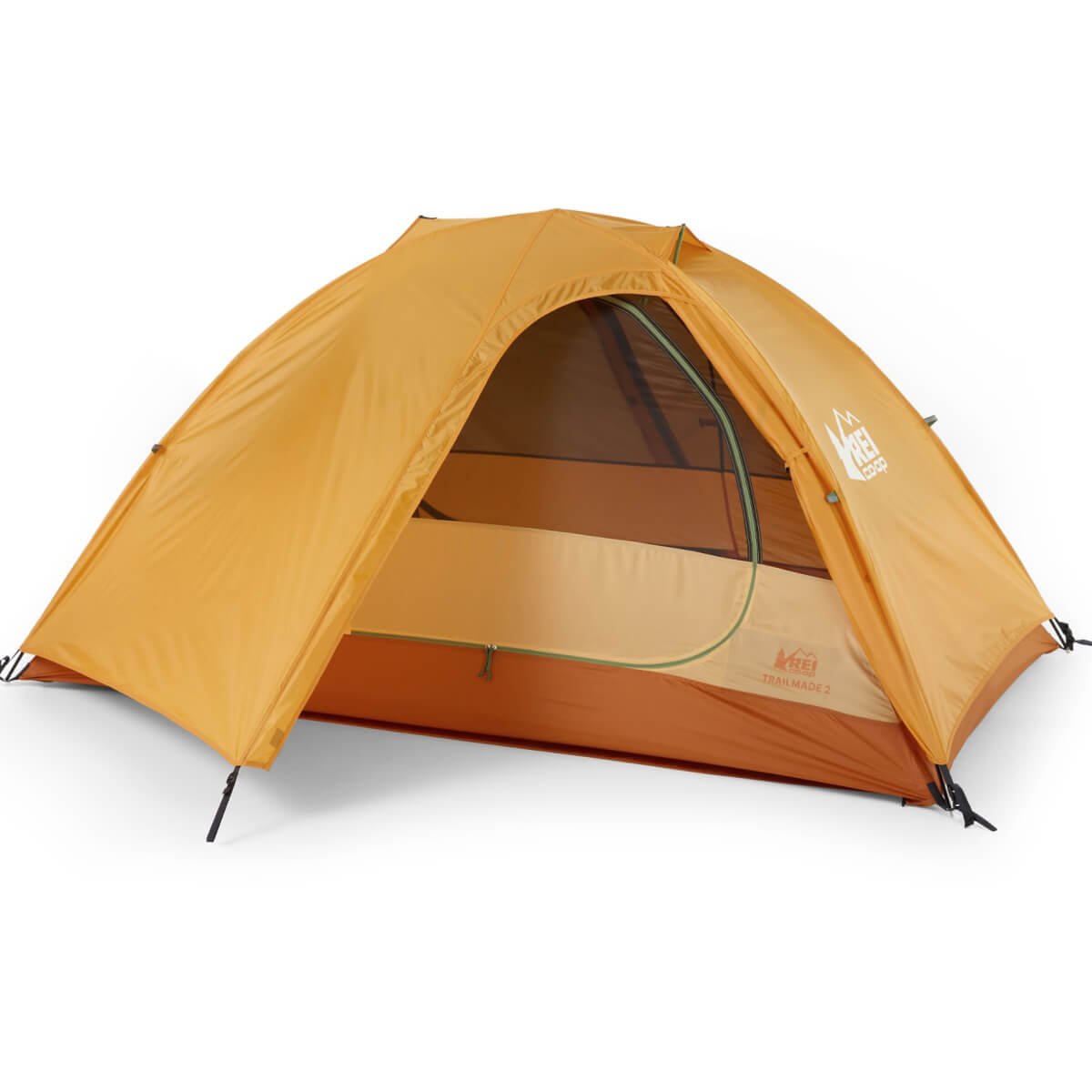
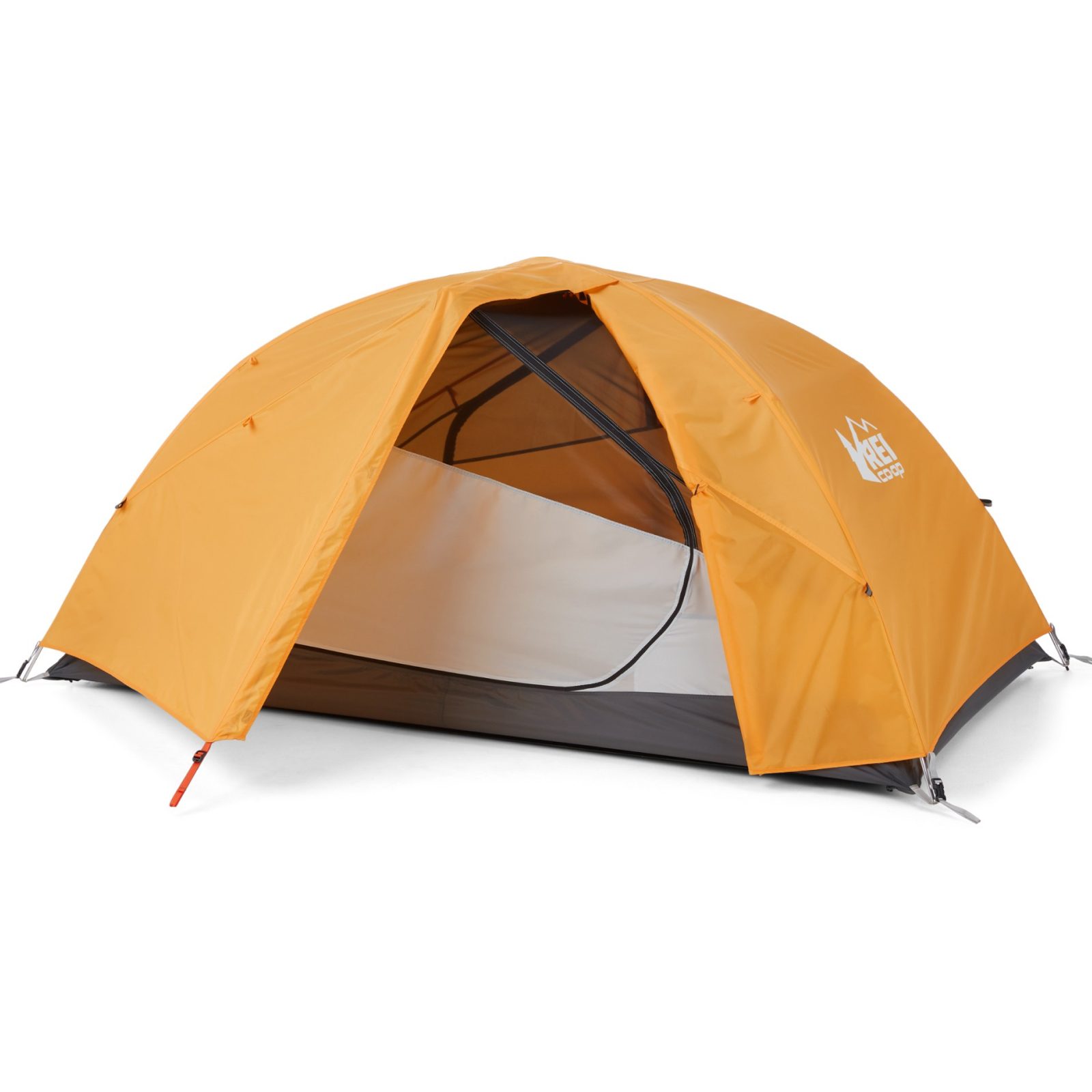
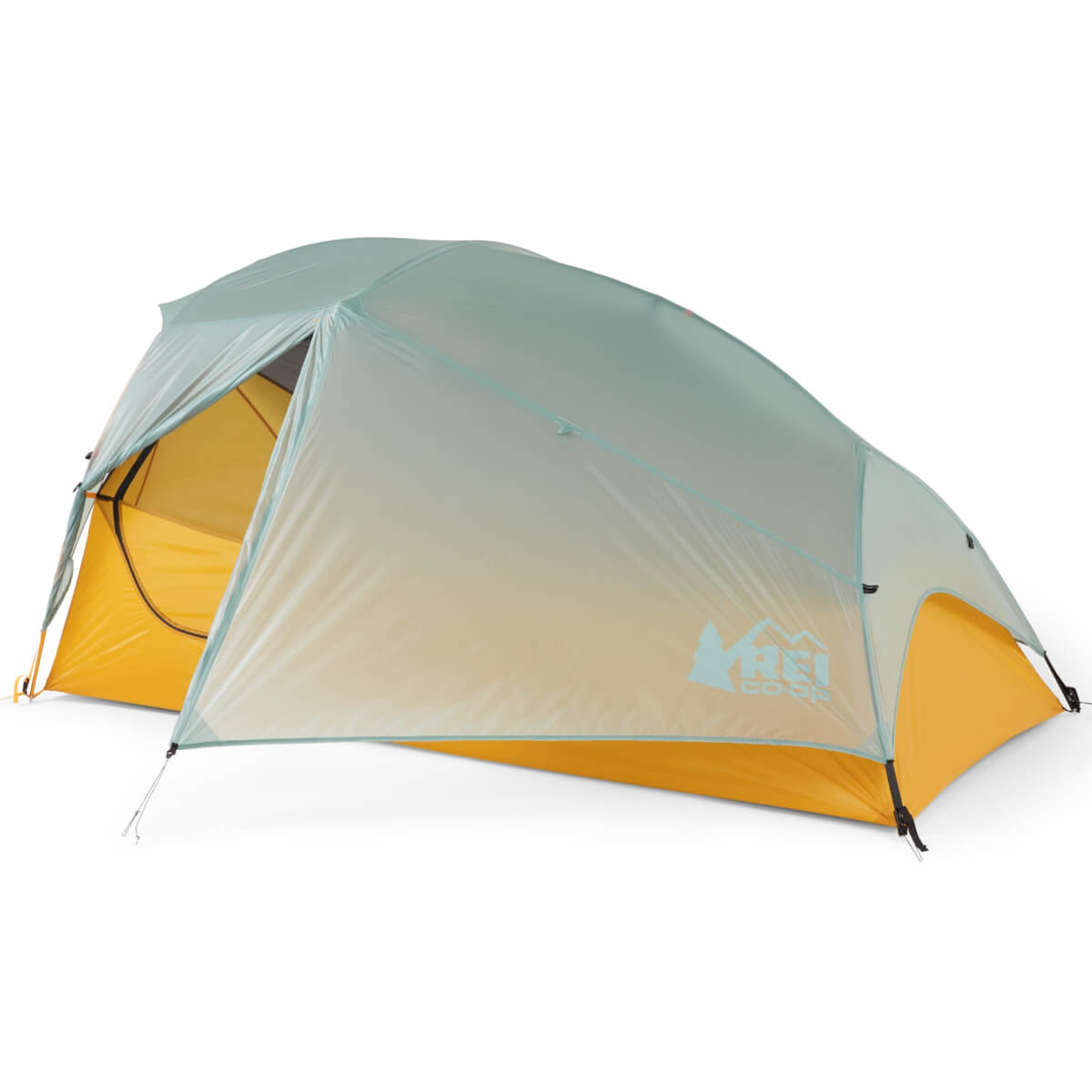
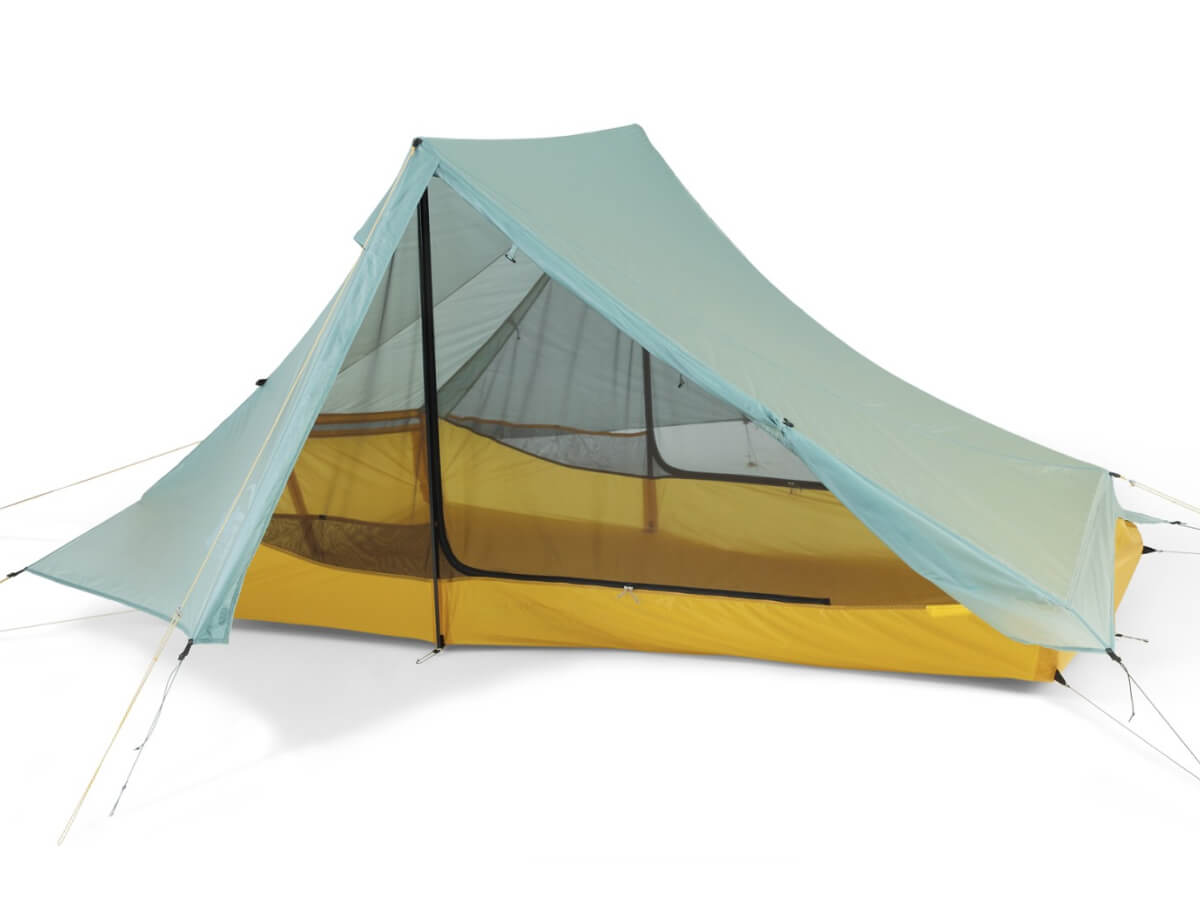
Leave a Reply
Want to join the discussion?Feel free to contribute!